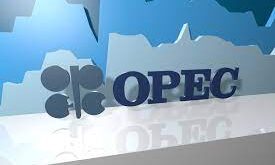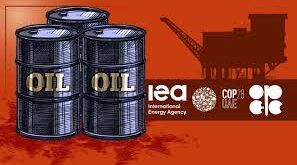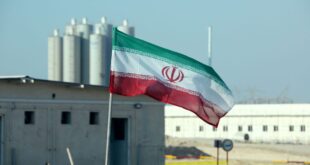OPEC kingpin Saudi Arabia is set to maintain a global pact to curb oil output as prices top three-year highs even as Russia looks to ease off production restrictions to meet fiscal targets.
It was “premature“ to even talk about gradual easing of cuts at the OPEC meeting in June. Saudi oil minister Khalid Al Falih told reporters after the exporter group’s monitoring committee meeting in Jeddah on Friday. He acknowledged. though. that any relaxation of current curbs will be done in a “gradual“ and not a “binary manner“.
His Russian counterpart Alexander Novak on the other hand. pressured amid threats of US sanctions over Moscow and a weak rouble. said a recalibration of the accord was in order.
“We have an opportunity at the ministerial meeting in June to reopen actions that can be both ways.“ he told the press.
“In fact we have been saying this from the very start that this opportunity is open at any time.`
OPEC and its allies led by Russia have been culling 1.8 million barrels of oil per day since January 2017. with the aim of propping up prices and siphoning a glut by bringing down oil inventories to their five-year average. The agreement. which has been extended till the end of 2018. will be discussed during the June OPEC meeting in Vienna.
Saudi Arabia and Russia announced at the Jeddah meeting that members of the global oil pact had achieved a record 149 per cent compliance in the output curbs and removed around 300 million barrels of inventory off the market.
Saudi Arabia. the world’s largest oil exporter. needs to maintain oil price levels to balance its budget and also to ensure a successful floatation of state-owned oil producer Saudi Aramco.
Russia. the biggest sovereign producer outside the exporters` group. needs high prices to bolster an economy already squeezed by EU sanctions and functioning under the looming threat of further sanctions from the US.
Russia is keen to sell its barrels while it can. especially under a favourable oil price climate in which the price of Brent has topped $74 per barrel.
While Mr Novak acknowledged that no producer among the 24-member grouping currently slashing production would likely go it alone. and that Russia was “100 per cent committed“ to the pact. there may be a case for it to start easing its output restrictions.
“Russia is the mostly likely to want to start reducing the cuts.“ said Spencer Welch. oil markets and downstream director at London-based IHS Market.
He noted however that the cuts would likely remain in place through 2018. with high compliance. except from Iraq and Kazakhstan. which were singled out for slacking at Friday’s meeting in Jeddah.
Vandana Hari. Singapore-based founder and chief executive of energy advisory firm Vanda Insights. said that Saudi Arabia’s stance and Russian support. albeit in a moderate way. is very much in line with the dynamics of the pact.
“The Saudis led the formulation of the OPEC non-OPEC production restraint strategy and they will need to ensure they remain in the driver’s seat as and when they see conditions ripe for an exit.“ said Ms Hari.
At its next gathering in Vienna. OPEC and its allies are set to determine a target to further draw down inventory levels.
Mr Al Falih said that the group’s new production regime would be handled “very thoughtfully“.
OPEC. which currently works on a five-year average assumption. may shift gear to a “seven-year average or similar“. said Ms Hari.
“The ground work for that is already being laid.“ she said.
`All signs point to the cuts being in place at least through the first half of 2019 and continuing strong compliance is now a foregone conclusion.`
 Iran Energy News Oil, Gas, Petrochemical and Energy Field Specialized Channel
Iran Energy News Oil, Gas, Petrochemical and Energy Field Specialized Channel




